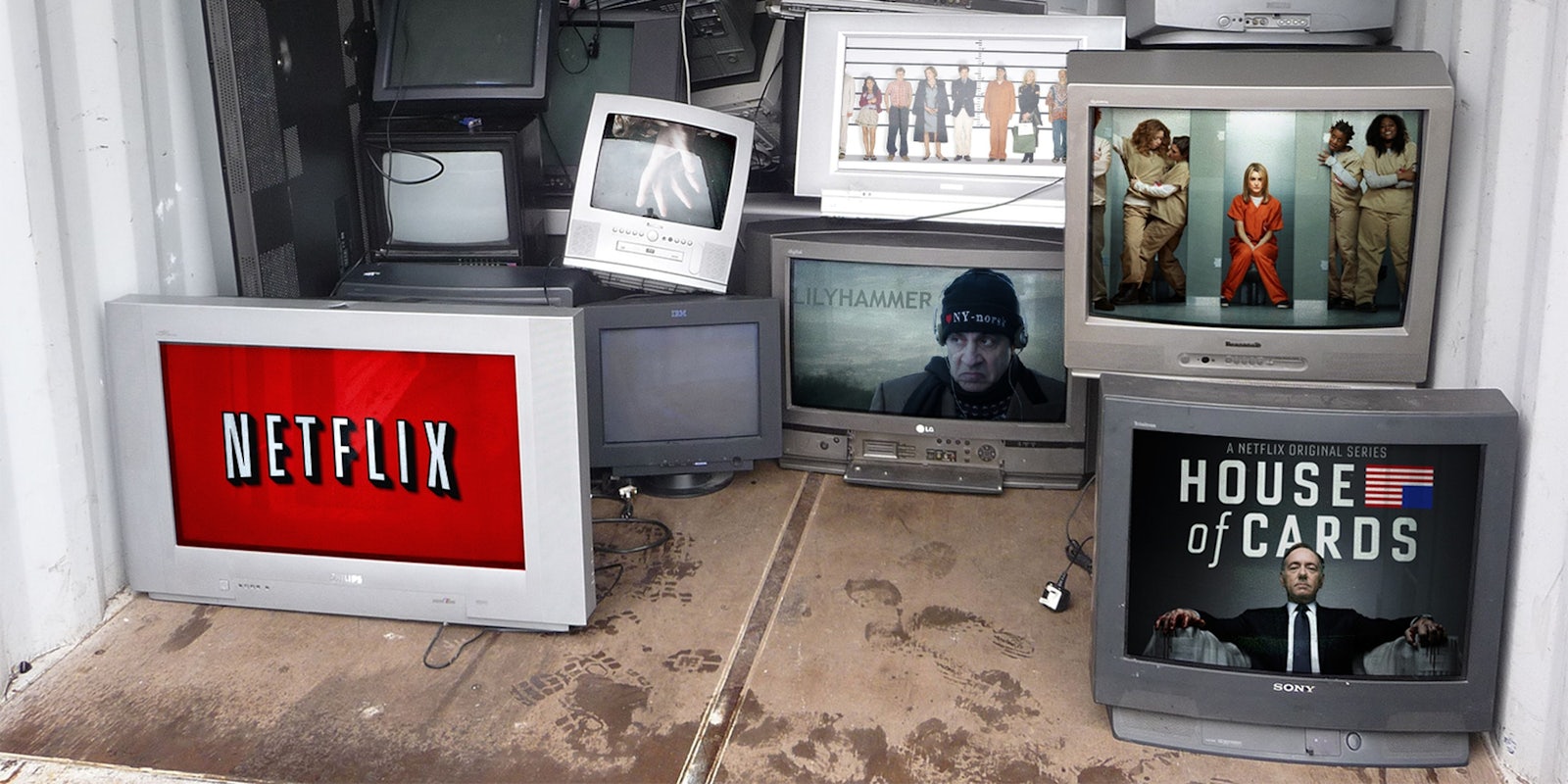Earlier this week, Netflix unveiled a new user interface for its app on gaming consoles, smart TVs, and Roku. The update not only received positive reviews for the new interface’s user-friendly controls and sleek interface, it signaled another move from the streaming giant to get people away from their computers and onto their couches.
It might seem odd that a website would want people to step away from their computers and tablets. But what if Netflix actually hates being a website?
The last year has been a huge success for the media company. After unveiling a slew of new shows (even earning nine Emmy nominations), signing deals with everyone from Marvel to Dreamworks, and seeking to get into the original movie business, calling Netflix a website certainly seems like a misnomer. But as “cordcutters” begin to rule the market, it’s important to remember that the Rick Grimes on your TV is being brought to you from a dot-com address.
Netflix, of course, wasn’t always this way. Back when those red envelopes were keeping the Postal Service relevant (a service Netflix still offers), the company was merely seen as a threat to Blockbuster—the video rental giant that, slowly and mercifully, closed its last stores this past weekend.
With home video in its rear window, Netflix, and online streaming in general, can push all in on conquering TV. The cordcutters—those who have disconnected or maybe never had a cable connection—are bleeding the business model of Cox, Comcast, and Warner Brothers dry, switching to streaming sites like Amazon Prime, Hulu, and Netflix. In 2013 alone, cable companies have lost 687,000 subscribers, making it the worst year for providers ever. And according to media research firm BTIG, Netflix was watched by more people and for longer than any cable channel. (Few sounded more tone-deaf than Charter CEO Tom Rutledge who was “surprised” that broadband-only subscriptions grew much faster than cable TV bundles.)
The reasons why Netflix is so surpassing its analog forebearers are numerous and obvious. After all, giving the customers what they want is not a dirty trick. The UI updates and partnership with streaming-box maker Roku, however, make it quite evident that Netflix wants to resemble the very industry it’s killing. They don’t want you huddled on a bed with an overheating laptop trying to keep up with the buffer speed of an episode of Breaking Bad, nor do they seem to care much for the bulky desktop I’m typing this on. When it comes to home entertainment, the living room still rules all.
It’s not just in streaming that this has become a rule of business. As we prepare for the long slog of the console wars, Microsoft and Sony have spent 2013 unveiling new, family-friendly features to the Xbox One and PS4, respectively. Each will have a camera-controlled interface (optional on the PS4) that can recognize individuals, meaning your daughter will be presented with Jake and the Neverland Pirates and Adventure Time while you’ll be presented with Inglorious Basterds and Adventure Time. Watch Jimmy Fallon and Ice-T have a blast with some augmented reality robots and tell me it doesn’t scream “fun for all ages”.
The one area where, thus far, the Internet is not keeping up is live broadcasts. We are still a ways away from opening our Xbox and pulling up a stream for an Eagles game or a network broadcast of the Oscar’s. In fact, the Internet is playing “little brother” to the broadcast networks in this way, considering Twitter’s appeal as a communal chatroom for live TV was a major portion of its IPO. (Watch Facebook try to replicate that appeal with their new “Live Events” feature.) Even Netflix CEO Reed Hastings has sworn Netflix will never look into live events (perhaps fearing a backlash from network execs upon whom most of Netflix’s content relies).
However, if the dulled march of technology’s rise has taught us anything, the Internet will find a way.
A generation is coming of age right now that will never remember what it was like to be “late” for a TV show or the drastic anxiety induced by the words “To Be Continued.” The cord-cutting, DVRing generation is setting a different standard for how the living room is used in daily life, and Netflix is about to reap the reward.
Illustration by Jason Reed


